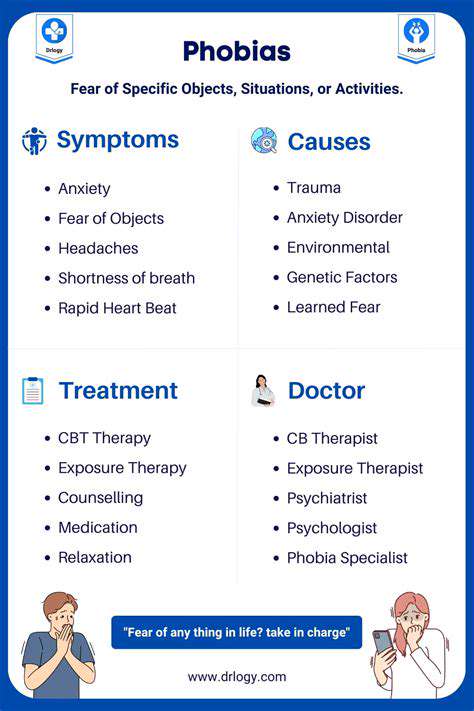Identifying Symptoms Associated with Agoraphobia
Understanding the Underlying Fear
Agoraphobia is characterized by a profound fear of situations where escape might feel impossible or help seems out of reach. This condition often stems from an intense worry about losing control or enduring a panic attack in public. Those affected may start avoiding social gatherings or everyday activities, which can severely diminish their well-being. While avoidance provides temporary relief, it often traps individuals in a cycle of loneliness and heightened anxiety.
The fear typically revolves around anticipating worst-case scenarios, like fainting or experiencing an uncontrollable panic episode. This constant state of dread can be as crippling as the actual panic attacks, keeping the mind in a relentless loop of alertness. Recognizing that these fears often outweigh real dangers is a critical step toward effective treatment.
Agoraphobia is deeply personal, with roots that vary from person to person. Genetics and past trauma may contribute, but individual triggers and anxieties are unique. Tailoring treatment to these personal nuances is essential for meaningful progress.
Recognizing the Manifestations of Avoidance
Avoidance behaviors are a defining feature of agoraphobia. People may retreat to safe zones, shunning crowded places like malls or theaters, or even avoiding solo travel or public transit. These limitations can erode social connections and stifle personal growth, leaving individuals feeling trapped.
As avoidance grows, so does isolation. Hobbies and social interactions once enjoyed may fall by the wayside, fueling feelings of sadness and despair. Spotting these patterns early is vital—it signals that professional support could make a difference.
Seeking help isn’t a sign of weakness; it’s a courageous first step toward reclaiming control. Therapy can provide tools to break free from avoidance and rebuild a fulfilling life.
Physical symptoms like racing hearts, sweating, or breathlessness often accompany these fears, especially when facing perceived threats. These reactions highlight how agoraphobia feeds on itself, with anxiety breeding more anxiety.
Beyond the Fear: Exploring Associated Symptoms

Beyond the Perceived Threat: Understanding the Roots of Fear
Fear, a primal human emotion, arises from perceived dangers, real or imagined. Its roots trace back to survival instincts, but personal experiences and learned behaviors shape how it manifests today. Unpacking these layers is key to addressing fear constructively.
The Spectrum of Fear: From Mild Anxiety to Panic
Fear isn’t one-size-fits-all—it ranges from nervousness to full-blown panic. Pinpointing where someone falls on this spectrum allows for targeted strategies to ease their distress. Personalized approaches are crucial for effective management.
The Impact of Fear on Behavior and Decision-Making
Fear can warp choices, leading to avoidance or poor decisions. When fear takes over, logic often takes a backseat, narrowing opportunities and stifling growth. Recognizing this influence is the first step toward countering it.
Cultural and Societal Influences on Fear
Culture shapes what we fear and how we express it. Societal norms dictate which threats loom large, coloring individual perceptions of safety and risk. These narratives can amplify anxieties for certain groups.
Coping Mechanisms and Strategies for Managing Fear
Healthy coping tools—like mindfulness or reframing negative thoughts—can disarm fear. Equipping people with these skills helps them challenge irrational fears and regain balance. Practical techniques empower lasting change.
The Power of Exposure and Confrontation
Facing fears gradually, as in exposure therapy, can dull their edge. Over time, this builds confidence and reduces anxiety’s grip, fostering resilience. Confrontation, though daunting, often leads to breakthroughs.
Seeking Support and Professional Help
When fear disrupts daily life, professional guidance can be transformative. Therapists offer tailored strategies to dismantle fear’s hold and restore agency. Reaching out is a pivotal move toward healing.